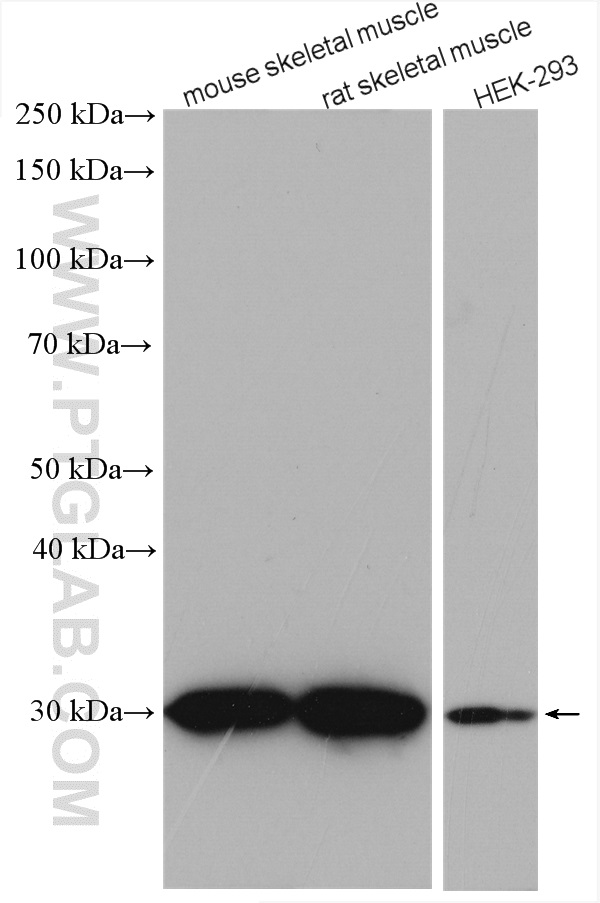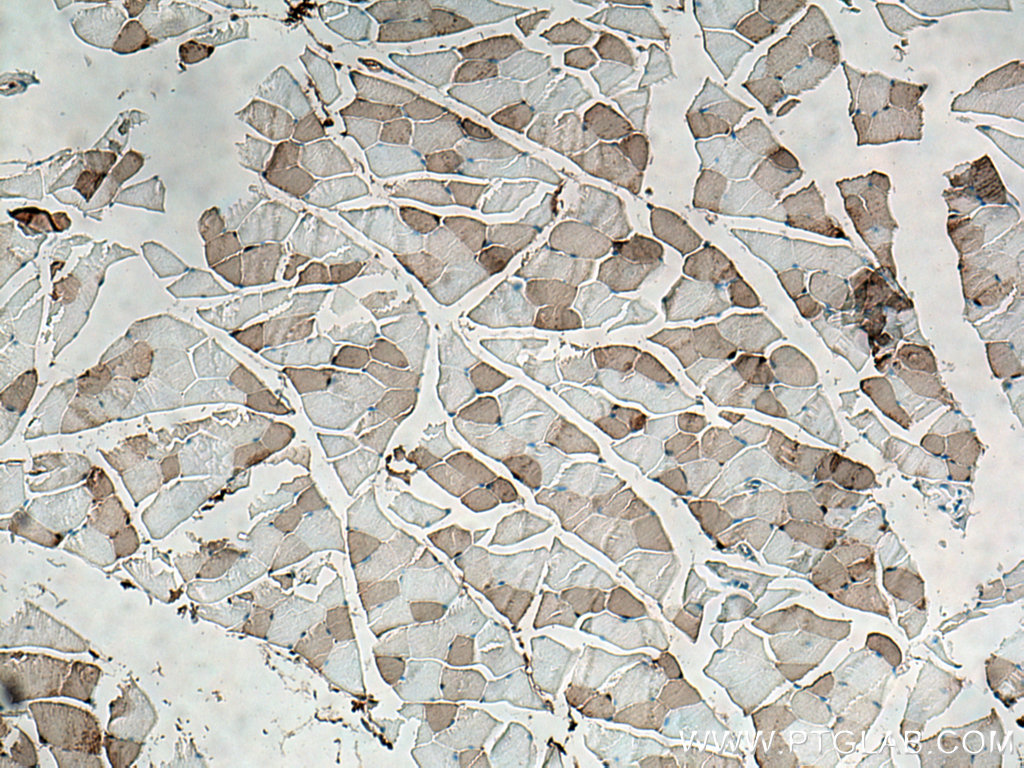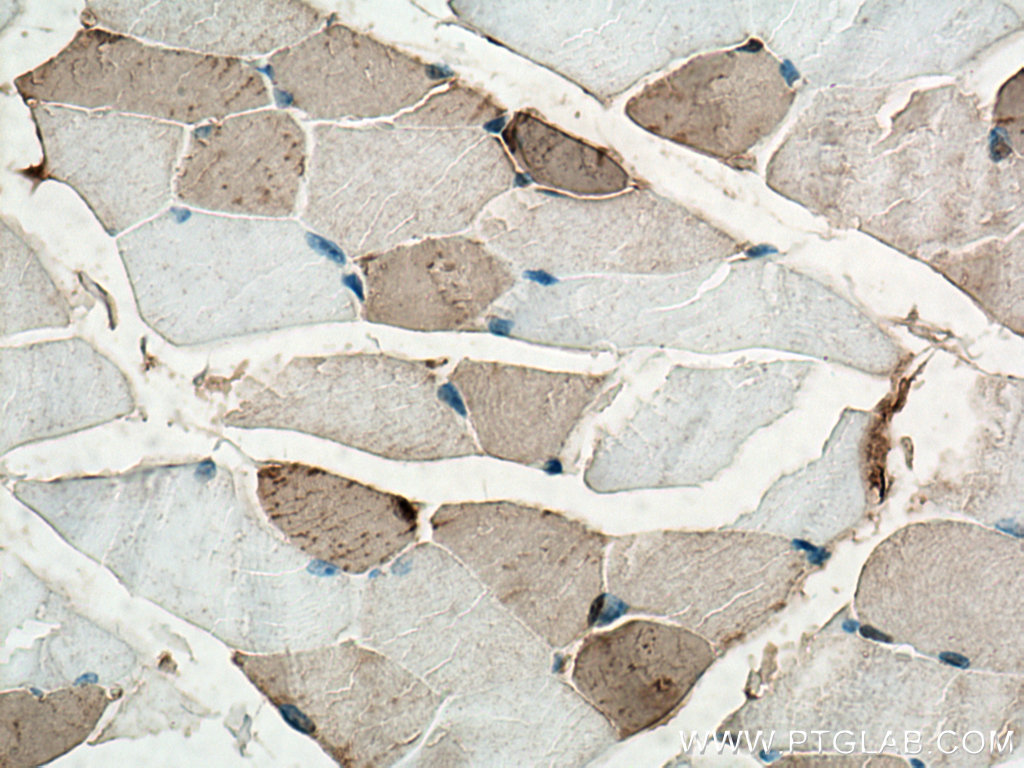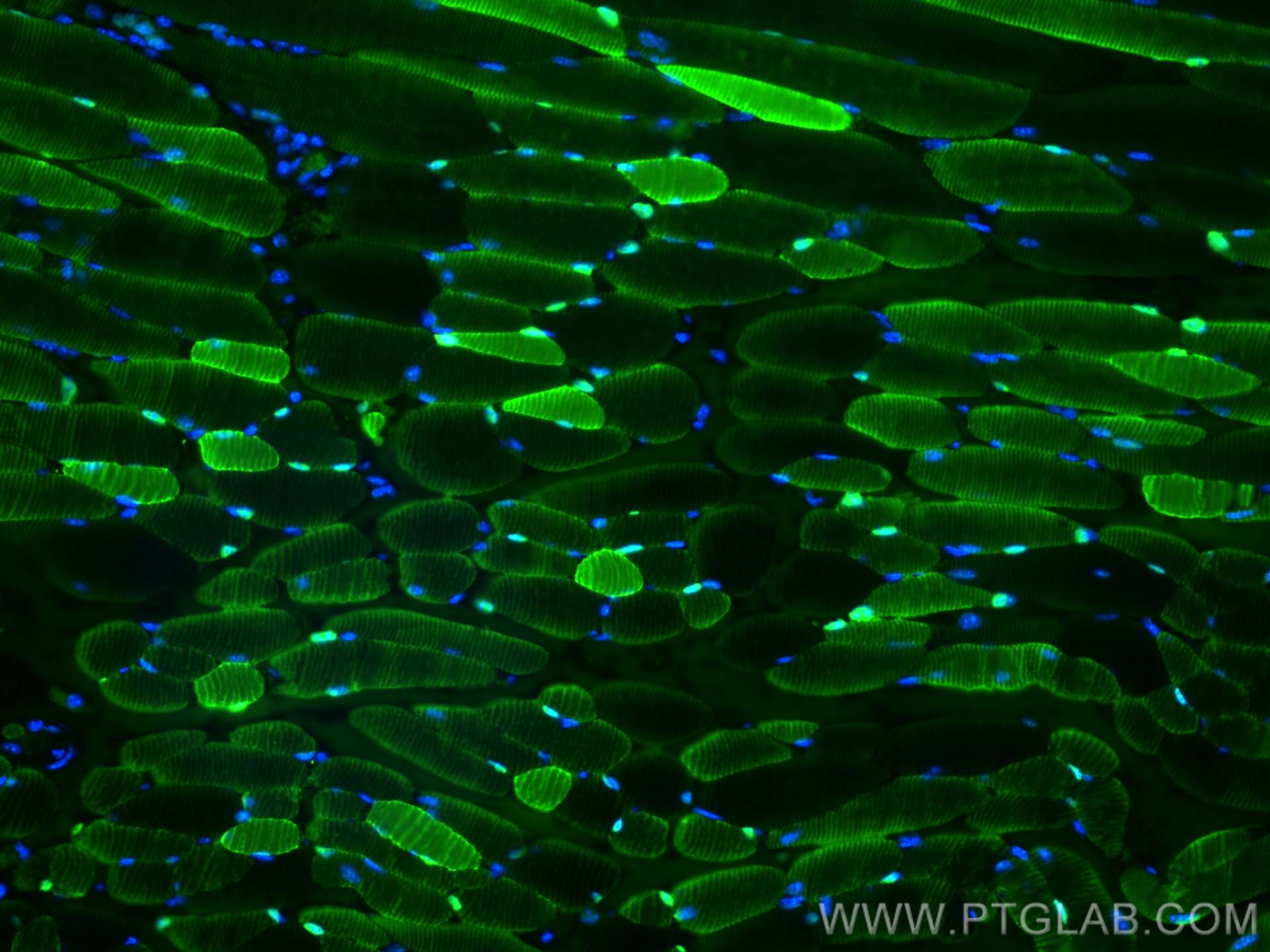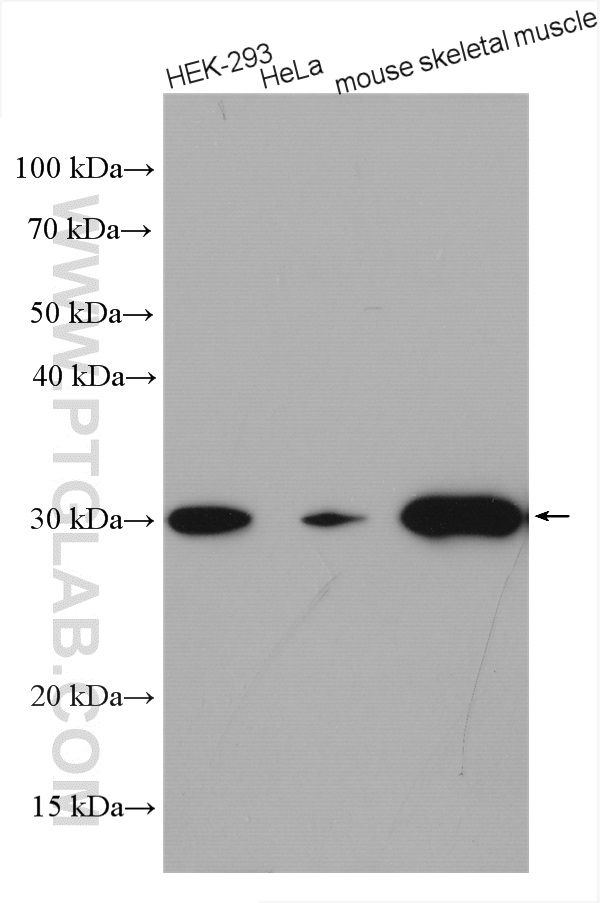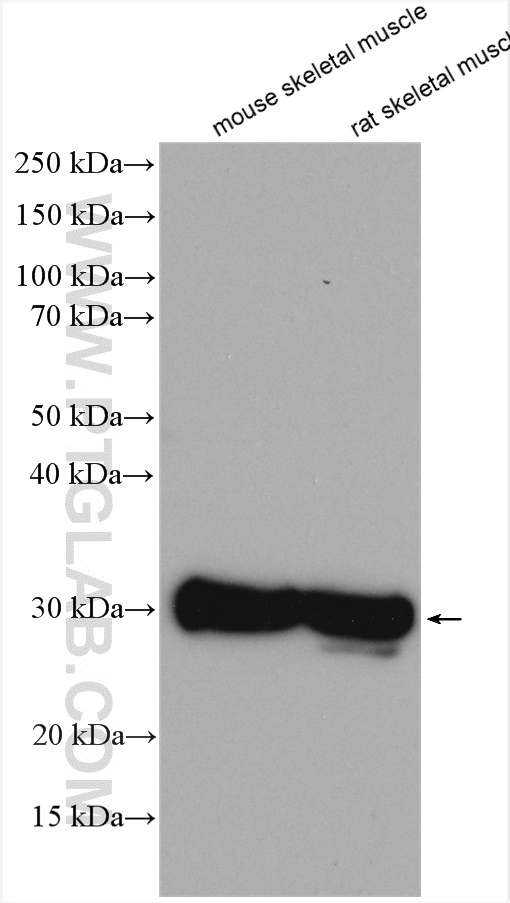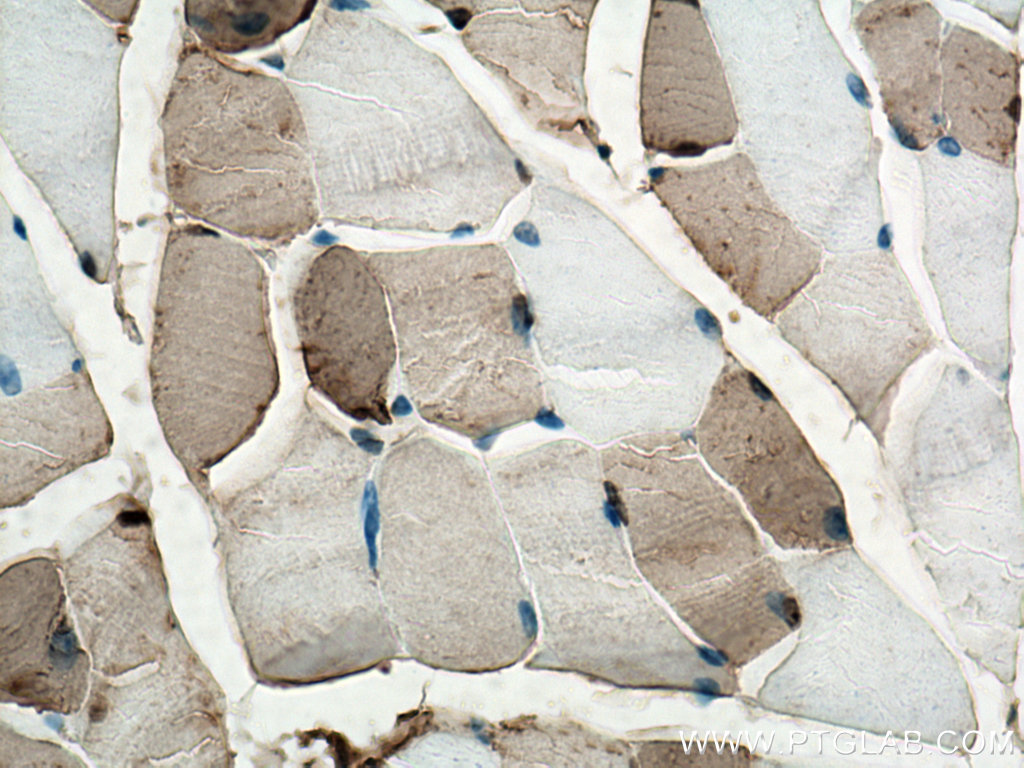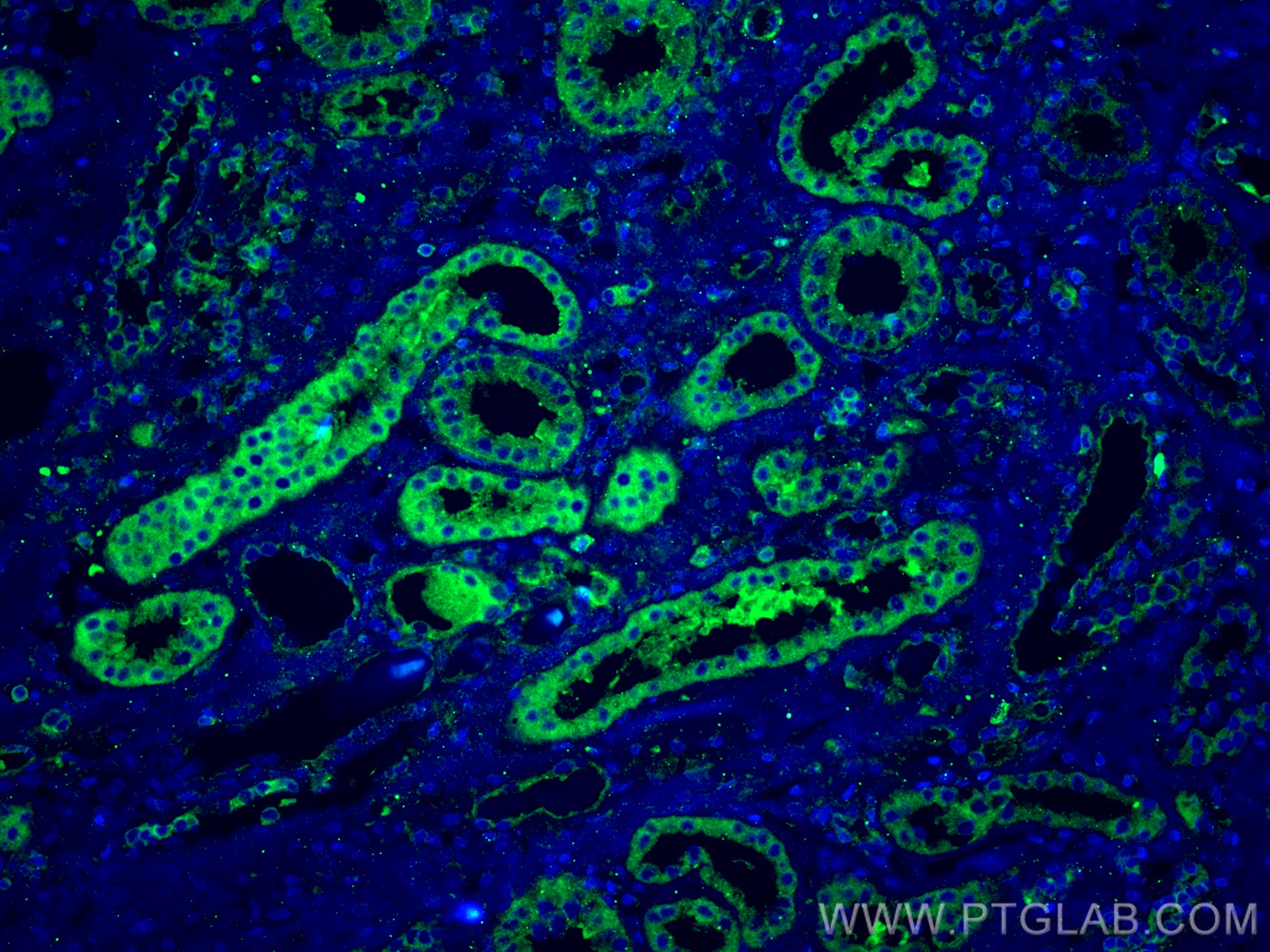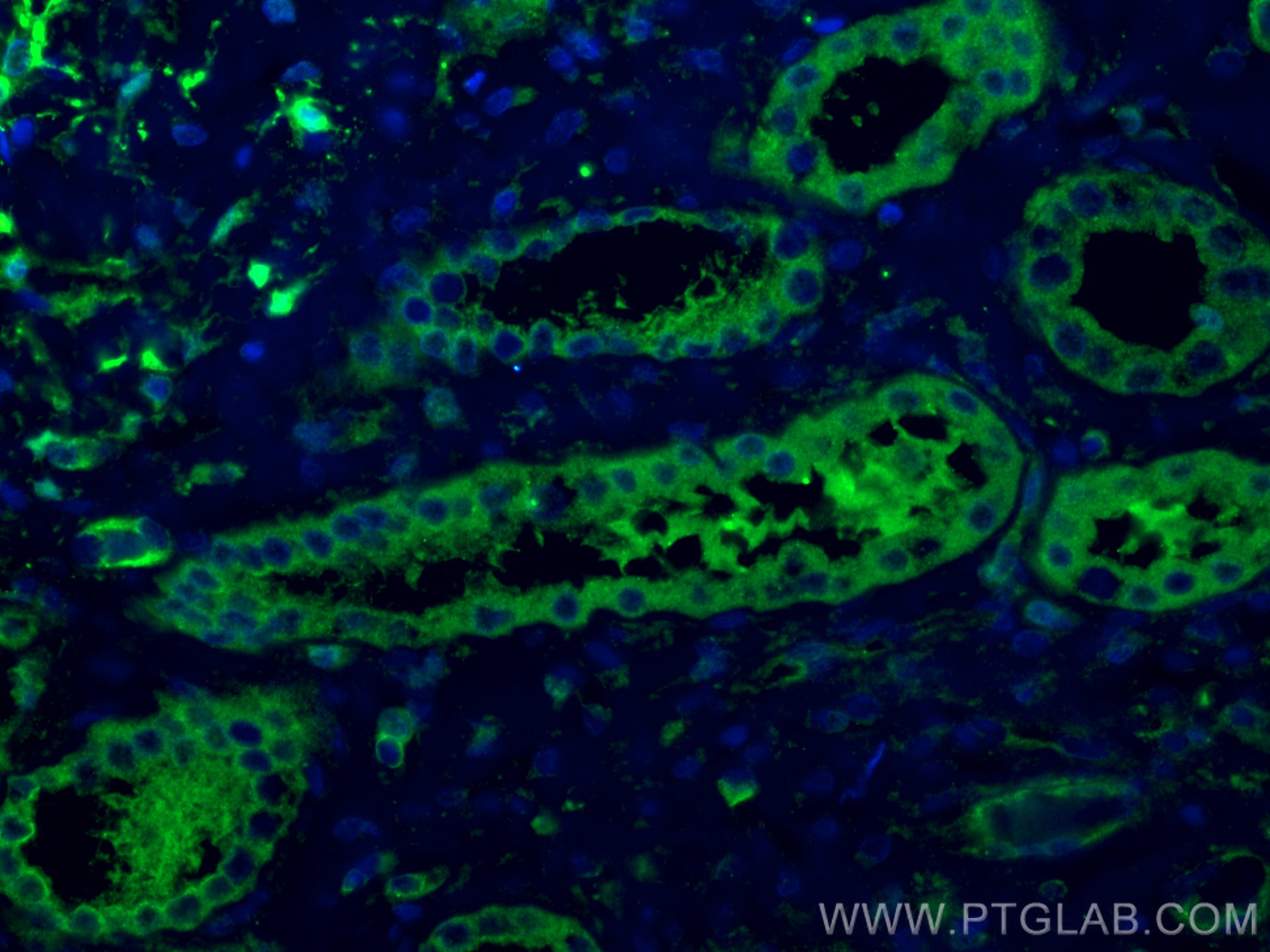验证数据展示
经过测试的应用
| Positive WB detected in | HEK-293 cells, mouse skeletal muscle tissue, rat skeletal muscle tissue, HeLa cells |
| Positive IHC detected in | mouse skeletal muscle tissue Note: suggested antigen retrieval with TE buffer pH 9.0; (*) Alternatively, antigen retrieval may be performed with citrate buffer pH 6.0 |
| Positive IF-P detected in | mouse skeletal muscle tissue, human kidney tissue |
推荐稀释比
| 应用 | 推荐稀释比 |
|---|---|
| Western Blot (WB) | WB : 1:2000-1:16000 |
| Immunohistochemistry (IHC) | IHC : 1:200-1:1000 |
| Immunofluorescence (IF)-P | IF-P : 1:50-1:500 |
| It is recommended that this reagent should be titrated in each testing system to obtain optimal results. | |
| Sample-dependent, Check data in validation data gallery. | |
产品信息
15197-1-AP targets CA3 in WB, IHC, IF-P, ELISA applications and shows reactivity with human, mouse, rat samples.
| 经测试应用 | WB, IHC, IF-P, ELISA Application Description |
| 文献引用应用 | WB, IHC, IF |
| 经测试反应性 | human, mouse, rat |
| 文献引用反应性 | human, mouse, rat |
| 免疫原 | CA3 fusion protein Ag7344 种属同源性预测 |
| 宿主/亚型 | Rabbit / IgG |
| 抗体类别 | Polyclonal |
| 产品类型 | Antibody |
| 全称 | carbonic anhydrase III, muscle specific |
| 别名 | Carbonic anhydrase III, Carbonate dehydratase III, Car3, CA-III, CAIII |
| 计算分子量 | 29 kDa |
| 观测分子量 | 30 kDa |
| GenBank蛋白编号 | BC004897 |
| 基因名称 | CA3 |
| Gene ID (NCBI) | 761 |
| RRID | AB_2243603 |
| 偶联类型 | Unconjugated |
| 形式 | Liquid |
| 纯化方式 | Antigen affinity purification |
| UNIPROT ID | P07451 |
| 储存缓冲液 | PBS with 0.02% sodium azide and 50% glycerol , pH 7.3 |
| 储存条件 | Store at -20°C. Stable for one year after shipment. Aliquoting is unnecessary for -20oC storage. |
背景介绍
Carbonic anhydrase III (CA3), which belongs to the alpha-carbonic anhydrase family, is a cytoplasmic enzyme that exhibits a relatively low carbon dioxide hydratase activity. It is expressed at a very high level in skeletal muscle, where physical exercise has been shown to increase free radical production. In addition to its carbon dioxide hydratase activity, CA3 has been demonstrated to have a carboxyl esterase activity and phosphatase activity, which suggests that it is a tyrosine phosphatase (PMID: 10064618). CA3 was found to be localized in Type-I muscle fibers and could be used as a marker for abnormal Type-I muscle fibers in several neuromuscular diseases (PMID: 6221502).
实验方案
| Product Specific Protocols | |
|---|---|
| WB protocol for CA3 antibody 15197-1-AP | Download protocol |
| IHC protocol for CA3 antibody 15197-1-AP | Download protocol |
| IF protocol for CA3 antibody 15197-1-AP | Download protocol |
| Standard Protocols | |
|---|---|
| Click here to view our Standard Protocols |
发表文章
| Species | Application | Title |
|---|---|---|
J Nutr Biochem Postnatal high-fat diet sex-specifically exacerbates prenatal dexamethasone-induced hypertension: Mass spectrometry-based quantitative proteomic approach. | ||
Am J Physiol Renal Physiol Studies of ultrastructure, gene expression, and marker analysis reveal that mouse bladder PDGFRA+ interstitial cells are fibroblasts | ||
Clin Proteomics Orthogonal proteomics methods warrant the development of Duchenne muscular dystrophy biomarkers | ||
PLoS One Multifactorial Comparative Proteomic Study of Cytochrome P450 2E1 Function in Chronic Alcohol Administration.
| ||
PLoS One Expression patterns and subcellular localization of carbonic anhydrases are developmentally regulated during tooth formation. | ||
FEBS Open Bio Carbonic anhydrase 3 increases during liver adipogenesis even in pre-obesity, and its inhibitors reduce liver adipose accumulation. |
